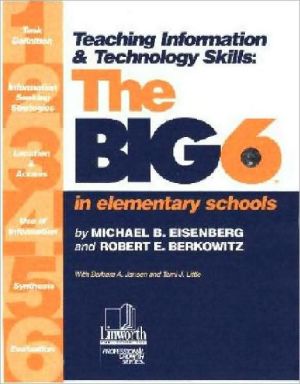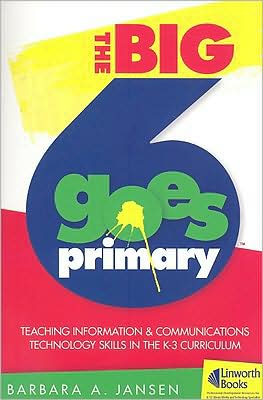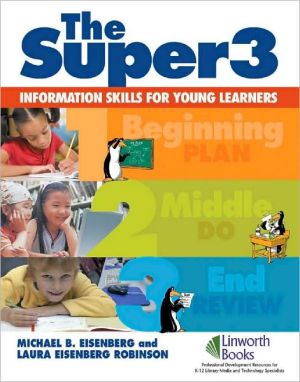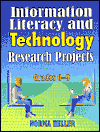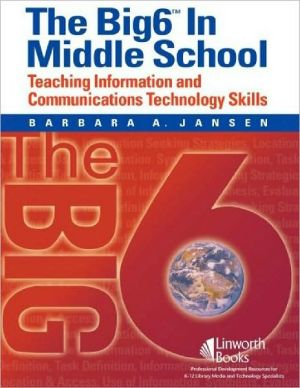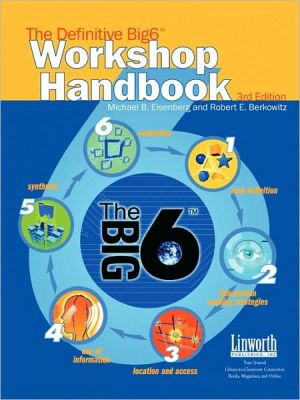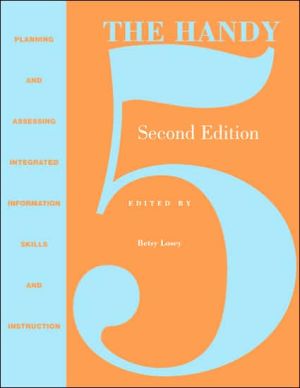Teaching Information and Technology Skills: The Big 6 in Elementary Schools
The Big6™ approach, the most widely known and used information problem-solving model, encourages information-based problem-solving and decision-making skills that empower students and improve literacy. This practical book enables elementary educators, classroom teachers, library media and technology specialists, and administrators to understand and implement the Big6 approach to information and technology skills learning. This book discusses specific techniques, strategies, and ways to build...
Search in google:
The Big6™ approach, the most widely known and used information problem-solving model, encourages information-based problem-solving and decision-making skills that empower students and improve literacy. This practical book enables elementary educators, classroom teachers, library media and technology specialists, and administrators to understand and implement the Big6 approach to information and technology skills learning. This book discusses specific techniques, strategies, and ways to build the Big6™ into existing instructional programs. Included are specific Big6 instructional ideas in context, which can be used to modify and meet specific instructional needs. Use the Big6™ to help students develop the skills and understanding they need to find, process, and use information effectively. School Library Journal The authors point out that their model for problem solving is not unique, but that its application to the world of information and technology gives it relevance. The six steps they prescribe are: "Task Definition," "Information Seeking Strategies," "Location & Access," "Use of Information," "Synthesis," and "Evaluation." However, Eisenberg and Berkowitz do not advocate following the steps in a linear fashion, but applying them as each situation demands. Sample lessons demonstrate how to integrate the Big6 into the curriculum and to teach students how to select appropriate resources, discriminate between needed and superfluous information, and evaluate their progress and success. The book promotes the use of indexes while doing research and, accordingly, contains an extensive index. Cooperation and coordination among classroom teachers, media specialists, technology teachers, and others involved in the teaching process are advised. The practical suggestions, student handouts, and evaluation tools make this a worthwhile volume.-Edith Ching, St. Albans School, Mt. St. Alban, Washington, DC Copyright 2000 Cahners Business Information.\|
\ From the Publisher"The authors point out that their model for problem solving is not unique, but that its application to the world of information and technology gives it relevance. . . . Sample lessons demonstrate how to integrate the Big6 into the curriculum and to teach students how to select appropriate resources, discriminate between needed and superfluous information, and evaluate their progress and success. The book promotes the use of indexes while doing research and, accordingly, contains an extensive index. Cooperation and coordination among classroom teachers, media specialists, technology teachers, and others involved in the teaching process are advised. The practical suggestions, student handouts, and evaluation tools make this a worthwhile volume."\ -\ School Library Journal\ \ \ \ \ \ School Library JournalThe authors point out that their model for problem solving is not unique, but that its application to the world of information and technology gives it relevance. The six steps they prescribe are: "Task Definition," "Information Seeking Strategies," "Location & Access," "Use of Information," "Synthesis," and "Evaluation." However, Eisenberg and Berkowitz do not advocate following the steps in a linear fashion, but applying them as each situation demands. Sample lessons demonstrate how to integrate the Big6 into the curriculum and to teach students how to select appropriate resources, discriminate between needed and superfluous information, and evaluate their progress and success. The book promotes the use of indexes while doing research and, accordingly, contains an extensive index. Cooperation and coordination among classroom teachers, media specialists, technology teachers, and others involved in the teaching process are advised. The practical suggestions, student handouts, and evaluation tools make this a worthwhile volume.-Edith Ching, St. Albans School, Mt. St. Alban, Washington, DC Copyright 2000 Cahners Business Information.\|\ \
